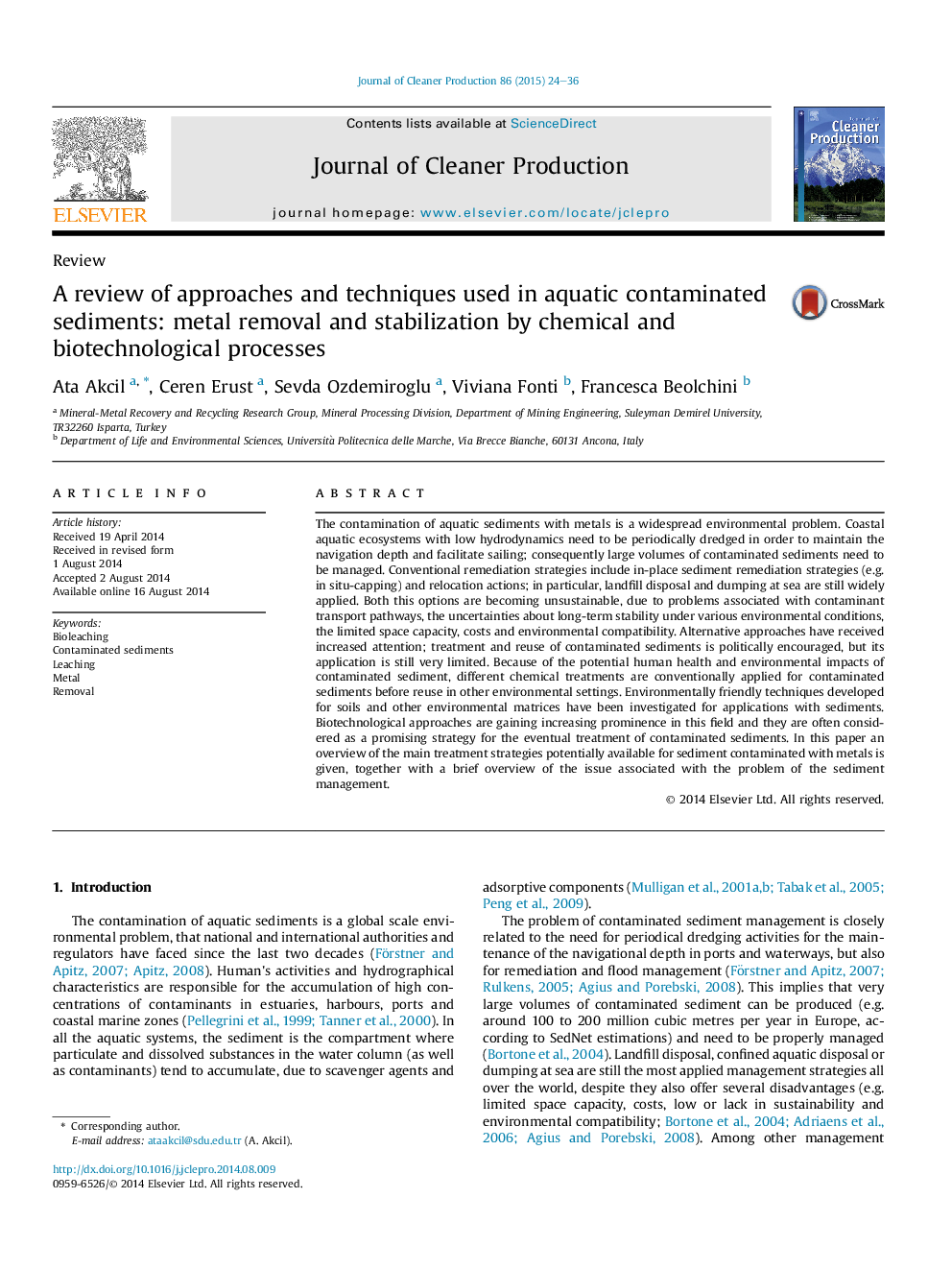| Article ID | Journal | Published Year | Pages | File Type |
|---|---|---|---|---|
| 1744699 | Journal of Cleaner Production | 2015 | 13 Pages |
•This paper enlightened the importance of aquatic contaminated sediments.•Novel technologies are reviewed for contaminated sediments and future technology directions.•The principles of physico–chemical–biological processes, their mechanisms.•Economically more effective and environmentally friendlier biological processing are suggested.
The contamination of aquatic sediments with metals is a widespread environmental problem. Coastal aquatic ecosystems with low hydrodynamics need to be periodically dredged in order to maintain the navigation depth and facilitate sailing; consequently large volumes of contaminated sediments need to be managed. Conventional remediation strategies include in-place sediment remediation strategies (e.g. in situ-capping) and relocation actions; in particular, landfill disposal and dumping at sea are still widely applied. Both this options are becoming unsustainable, due to problems associated with contaminant transport pathways, the uncertainties about long-term stability under various environmental conditions, the limited space capacity, costs and environmental compatibility. Alternative approaches have received increased attention; treatment and reuse of contaminated sediments is politically encouraged, but its application is still very limited. Because of the potential human health and environmental impacts of contaminated sediment, different chemical treatments are conventionally applied for contaminated sediments before reuse in other environmental settings. Environmentally friendly techniques developed for soils and other environmental matrices have been investigated for applications with sediments. Biotechnological approaches are gaining increasing prominence in this field and they are often considered as a promising strategy for the eventual treatment of contaminated sediments. In this paper an overview of the main treatment strategies potentially available for sediment contaminated with metals is given, together with a brief overview of the issue associated with the problem of the sediment management.
Graphical abstractFigure optionsDownload full-size imageDownload as PowerPoint slide
